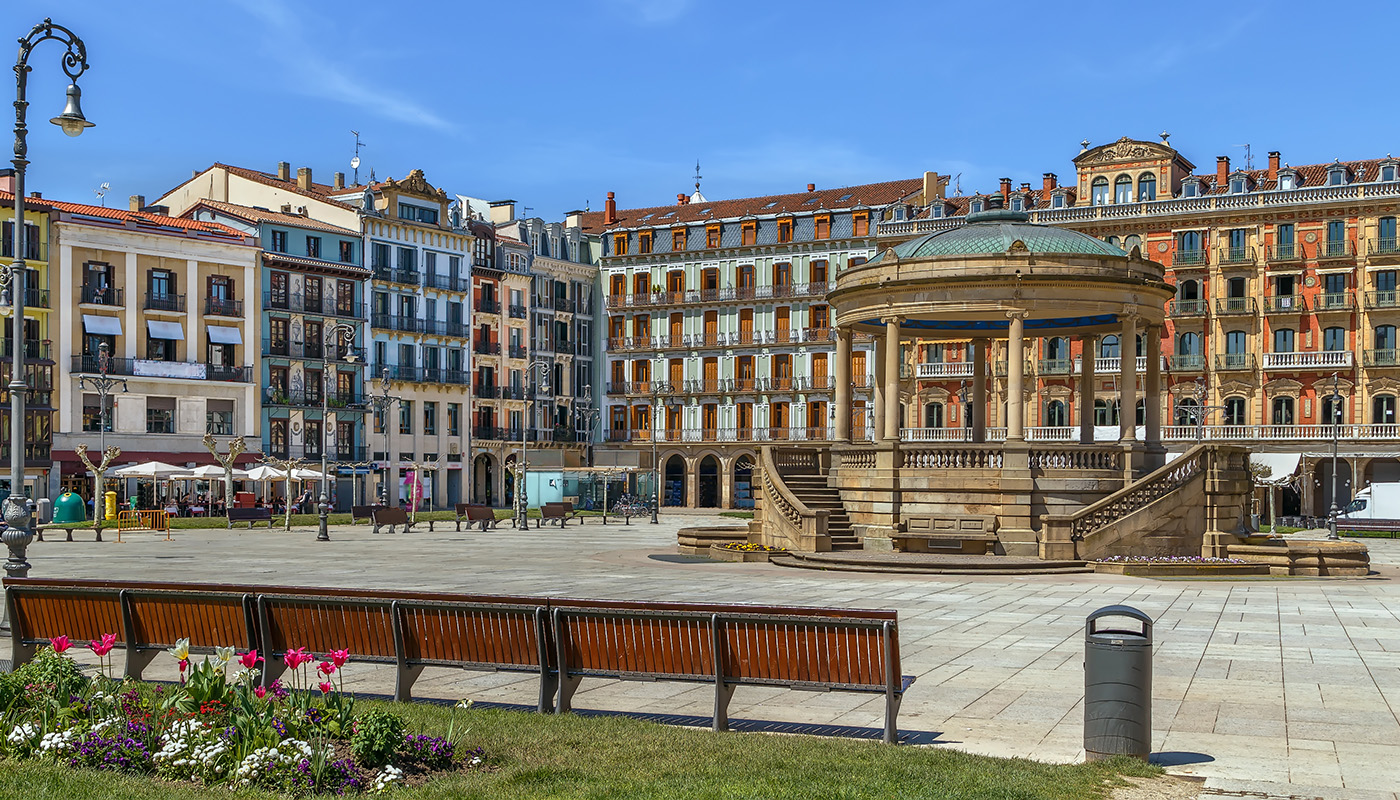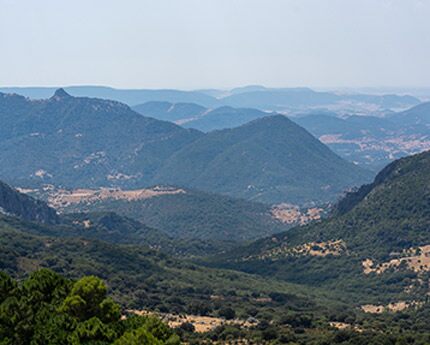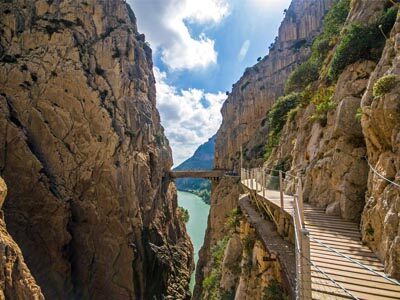Just 5 kilometres north of Málaga city, nature lovers will find Montes de Málaga, a beautiful mountain range where the Guadalmina river flows through rugged terrain. This landscape is also home to the Montes de Málaga Natural Park, which acquired this status in 1989 and became the green lung of the neighbouring areas. It is also part of the Casabermeja and Colmenar municipalities, two perfect examples of Mediterranean architecture where you can behold the rich ethnographic heritage of the region.
The natural park is also a unique place to do sports with five signposted hiking trails and two cycling routes. The Montes de Málaga are both near to the city and accessible to all types of visitor. Viewpoints, reservoirs and ancient Prehistoric necropolises add the finishing touches to the wealth of cultural attractions concealed in this outstanding setting. If you like the sound of it, read on to learn the hidden secrets of Málaga’s mountains.
A little history of the Montes de Málaga
From a historical perspective, the current site of the Montes de Málaga Natural Park—almost 5,000 hectares—is an example of a particularly anthropic space, i.e. a place altered by human activity. Although the Aleppo pine now proudly stands as the lord and master of the area, there was a time under Roman rule when the forest was subject to intense deforestation to produce wood for shipbuilding. By the time the Visigoths arrived on the Iberian Peninsula in the mid-fifth century, the Montes de Málaga were in poor condition. Fortunately, they were protected by the Visigoth legal code and anyone who dared to steal wood from the area was severely punished.
When the Moors conquered the Peninsula the legislation protecting the mountains remained in force, but with the arrival of the Catholic Monarchs in 1487 the land was shared among Christians and the protection laws were abandoned in favour of wine production. Tearing down the Mediterranean forests that had functioned as a type of protective blanket for the soil was the leading cause behind the catastrophic floods suffered by neighbouring Málaga in the following centuries.
In the late nineteenth century, due to an outbreak of phylloxera—a disease caused by a grape parasite—the area’s vineyards began to rapidly decline. In 1930, the Andalusian government took advantage of the fact that agricultural activity in the region was being abandoned and ordered the mountains to be reforested with Aleppo pine, and the Agujero reservoir to be constructed to counteract, once and for all, the constant threat of flooding. These days, while only a marginal portion of the land is dedicated to wine production, the Montes de Málaga have recovered the magnificent forests of their past.
The Montes de Málaga Natural Park: flora and fauna
The mountains’ current appearance resembles the way the Montes de Málaga looked like several hundred years ago. As we mentioned above, intense reforestation of the area took place in the 1930s, with heavy use of Aleppo pine, and since then the forests have undergone further progress. Native plants—species that used to grow here before vines proliferated across the mountains—have reappeared and today you can once again walk among holm oaks, cork oaks and, more sparingly, chestnut and walnut trees, black poplars and ashes, among other Mediterranean species.
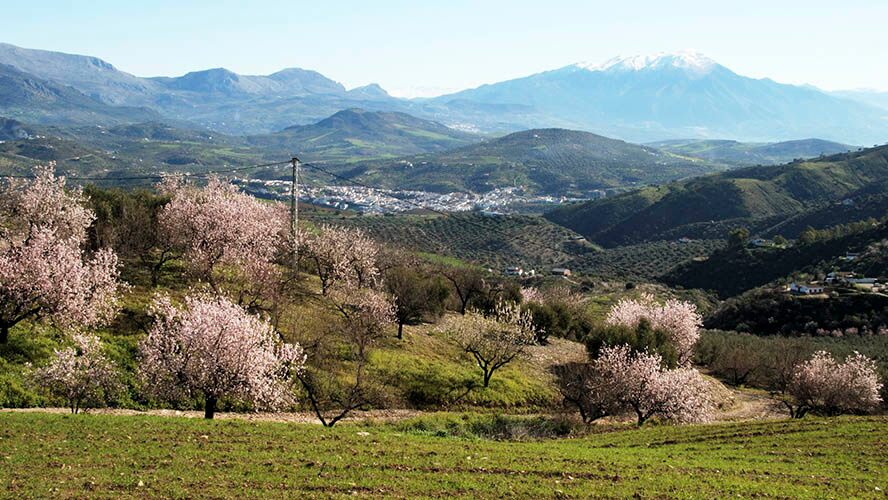
In turn, although the fauna of the Montes de Málaga is mostly nocturnal, it’s certainly possible to glimpse some of its specimens at dawn and dusk. The largest species is the wild boar and the most common is the red fox. Marten and bats are more protective of their privacy but squirrels and woodpeckers abound. However, the star of the park is definitely the chameleon, a protected species that is extremely rare in the rest of the Iberian Peninsula.
Some hiking trails
As we already mentioned, the natural park is just 5 kilometres from Málaga and is easily reached along the A-7000 motorway (also known as the ‘Carretera de los Montes’). A favourite recreation area of Málaga’s residents, the main attractions of the park are its five signposted hiking trails:
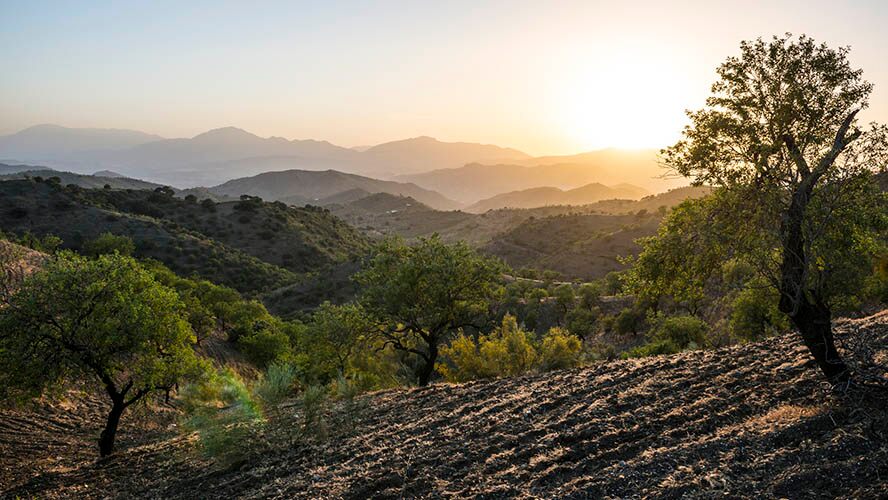
- The Picapedreros-Boticario trail is a pleasant 7-kilometre walk past the Picapedreros waterfall and the ruins of one of the park’s many wineries. These old buildings were once used to produce wine and are a reminder of the region’s wine-growing past.
- The Torrijos trail is under a kilometre in length and is very easy. It starts at the old Torrijos winery which has been converted into an eco-museum and visitors’ centre. Inside the museum you can learn about the history of the area and its traditional professions, as well as admire a display of tools, oil mills and bread ovens.
- The Pocopán trail has less ethnographic value but is of greater interest in terms of its trees. It is 2.7 kilometres long and is a slightly harder route through pine, holm oak and cork oak forests—a dynamic showcase of the twentieth-century reforestation of the area and its evolution up to the present day.
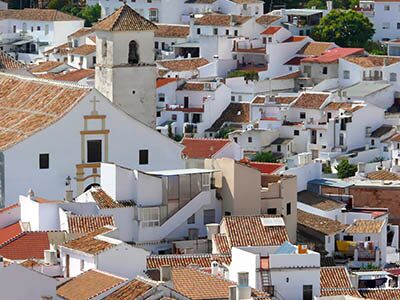
- Finally, the El Cerrado trail is a circular 2.9-kilometre route which boasts impressive views from the Mirador del Cochino viewpoint; along with Mirador de Martínez Falero and Mirador de Francisco Vázquez Sell, this is one of the three stunning viewpoints in the area. They are unique balconies that give you the chance to appreciate the size of the park and the city of Málaga. On very clear days, you can even glimpse the coast of Africa.
Charming villages in the mountains of Málaga
There are two unique villages in the far north of the park that are included in the protected area, along with Málaga city. One is Colmenar, named after the beehives that for many years were the source of the local economy. The churches Ermita de Nuestra Señora de la Candelaria and Iglesia de la Asunción are excellent examples of the traditional Mediterranean architecture tucked away in this stunning setting.
The other village is Casabermeja, known as the “gateway to Málaga”, where you’ll find numerous historic attractions. One is the Las Chaperas Necropolis, a megalithic burial site and evidence of the fact that the Montes de Málaga have been home to various civilizations since ancient times.
The Ceramic Workshop Museum and the Zambra Tower are certainly worth visiting, and you should also drop in on the cemetery, which was declared a Historic-Artistic Monument in 1980 (and an Asset of Cultural Interest in 2006) thanks to the unusual architecture of its mausoleums and tombs.

























































